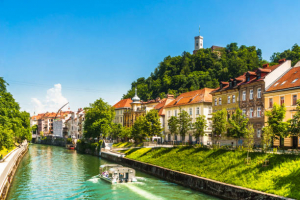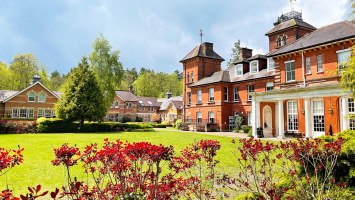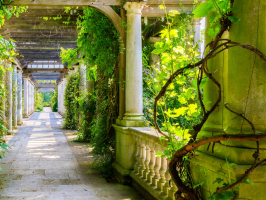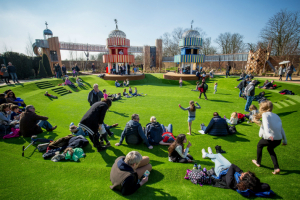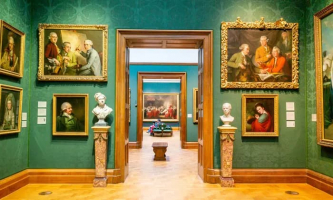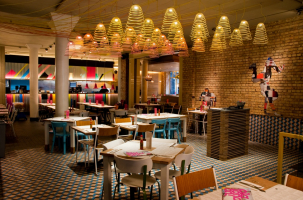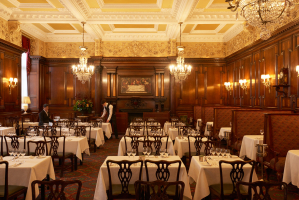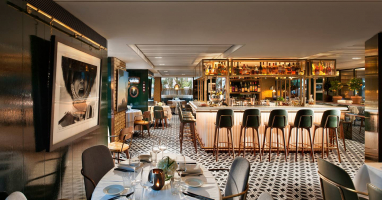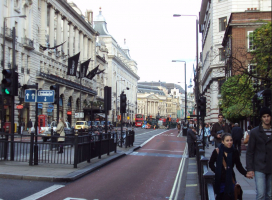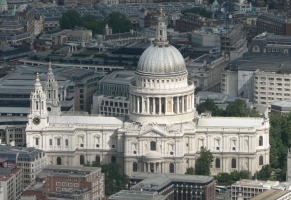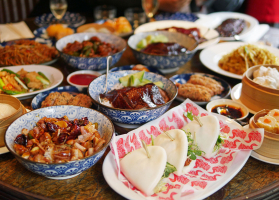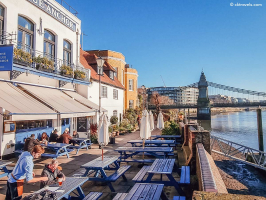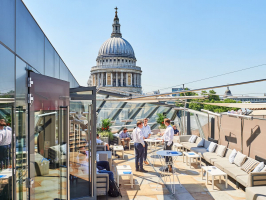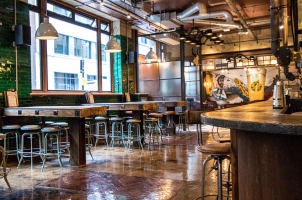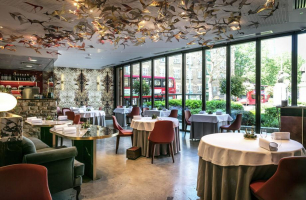Top 12 Hidden Green Spaces In London
One of the greenest cities in the world is London. The majority of people live near a park, and famously large open spaces can be found all the way from ... read more...Greenwich Park to Hampstead Heath. But the city's green spaces are also spread throughout many obscure corners and crevices that are less frequented and, as a result, typically quiet. Yes, you might have to look for them under a deserted office building. Therefore, Toplist is here to show you top of hidden green spaces in London.
-
Established in 1984, the Phoenix Garden is a neighborhood community garden in the heart of London, England. The Phoenix Garden is tucked between the bustling Soho and Covent Garden neighborhoods and is situated in St Giles, in the London Borough of Camden, behind the Phoenix Theatre. The Garden is situated just east of Charing Cross Road, north of Shaftesbury Avenue, and between St. Giles Passage and Stacey Street. This is one of Hidden Green Spaces In London that has hidden beauty.
The Garden was constructed in the 1980s on a parking lot that had previously been a World War II bombing range (the site was bombed in 1940). The Garden had housed numerous homes, including a bar. The Phoenix Garden has overcome several difficulties, including a significant industrial fly-tipping problem shortly after its establishment. Of the original seven Covent Garden Community Gardens, only one remains today.
The garden was shut down for an 18-month refurbishment in 2016 as it faced closure. It reopened in 2017 with a building housing event space created by Office Sian. The 2019 movie Last Christmas includes a scene from the garden. In the shadows of Charing Cross Road, this is a great location for a peaceful lunch break. Volunteers take care of the garden's plants, flowers, and wildlife. Watch out for frogs and sparrows, which are flourishing as a result of a passionate conservation effort.Address: 21 Stacey St, London WC2H 8DG, United Kingdom
Phone: +44 7716 480049
Opening hours: 10AM - 6PM
Rating: 4.6/5.0, 355 Google reviews
Website: https://www.thephoenixgarden.org/
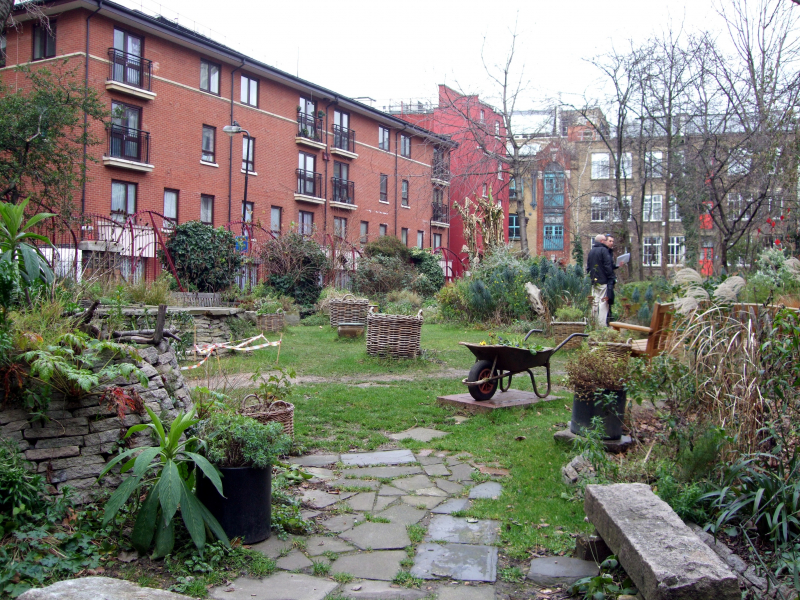
https://en.wikipedia.org/ 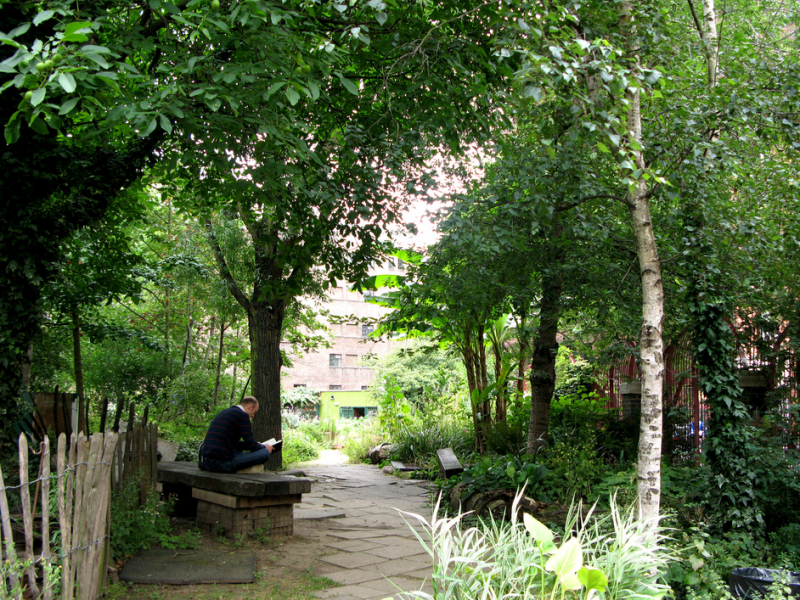
https://www.christopherfowler.co.uk/ -
A little distance north of St. Paul's Cathedral in the heart of London is a public garden called Postman's Park. It is one of the largest open areas in the City of London and is surrounded by Little Britain, Aldersgate Street, St. Martin's Le Grand, King Edward Street, and the location of the former General Post Office (GPO) headquarters. One of London's most moving structures, George Frederic Watts' "Memorial to Heroic Self-Sacrifice," is just a short stroll from St. Paul's Cathedral. A little more than 50 ceramic plaques, each honoring a regular person who sacrificed their life trying to save others, are scattered across the peaceful Postman's Park, tucked beneath a tiled roof. The descriptions of several of the situations are so terrible that you could easily spend your whole lunch hour reflecting on their selflessness.
The memorial was designed in 1887 by artist George Frederic Watts with the initial goal of celebrating Queen Victoria's Golden Jubilee. When it was finally unveiled in 1900, there were just four plaques present. Inconsistent additions were made after Watts' wife took over the project after his early death. The ceramicist who was creating the plaques then left to finish his book. This indicated that the 53rd plaque wasn't actually added until 1931.Postman's Park got its name from how well-liked it was by employees of the former General Post Office. The park was close by, so employees frequently spent their lunch breaks there. Perhaps you are also familiar with the park because it appears in the 2009 movie Closer, in which one of the characters takes a pseudonym from one of the plaques.
Address: King Edward St, London EC1A 7BT, United Kingdom
Phone: +44 20 7374 4127
Created: 28 October 1880
Opening hours: 8AM - 7PM
Rating: 4.6/5.0, 1,024 Google reviews
Website: https://www.cityoflondon.gov.uk/things-to-do/city-gardens/find-a-garden/postmans-park
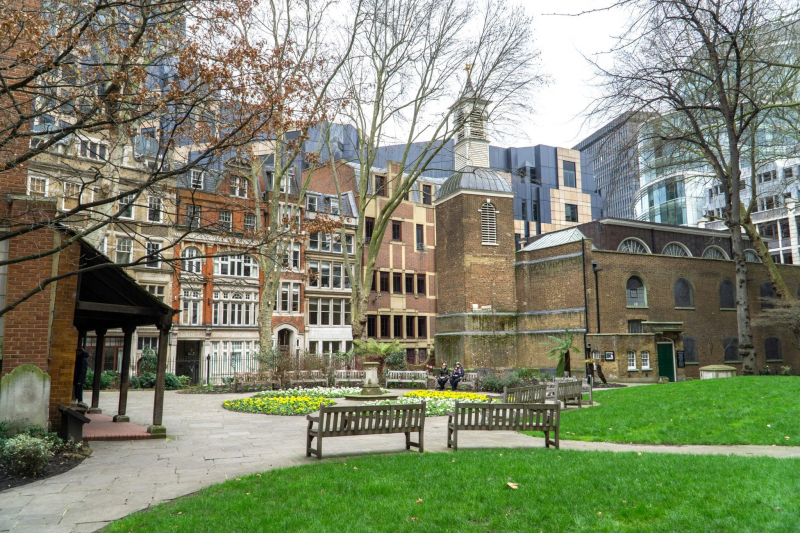
https://secretldn.com/ 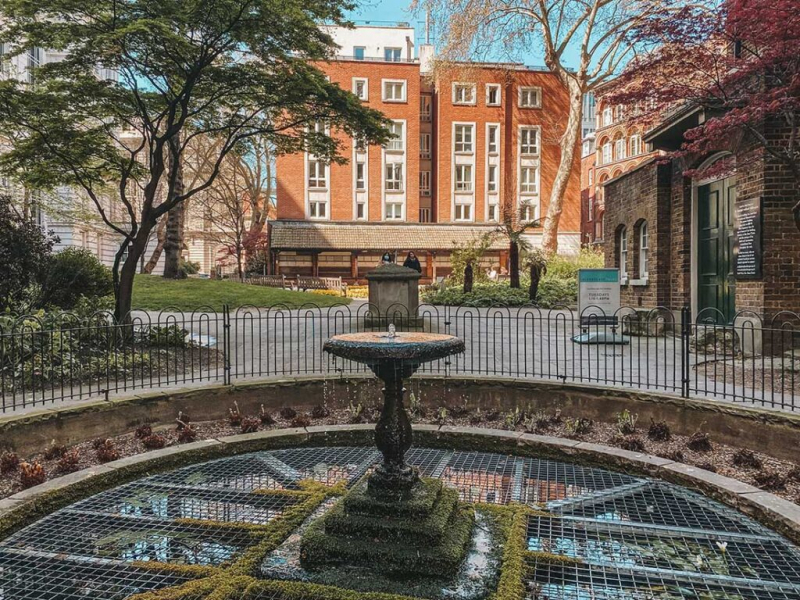
https://likelovelondon.com/ -
The Society of Friends first came up with the concept for Red Cross Garden (Quakers). In order to construct a meeting house on some land they already owned and utilized as a burial site, they took out a lease on the west side of Red Cross Street (now Red Cross Way) in Southwark in 1762. Although the name of the garden is written with two words and the name of the street is written with one, both are located on Redcross Way. It is located in Southwark, a borough of London. Elijah Hoole's design for the garden and its companion cottages serves as a precursor to one of Octavia Hill's social housing projects.
Red Cross Garden has been faithfully recreated to its original plan, complete with pond, house, bandstand, and formal borders. It was originally created to provide Southwark kids from adjacent tenements with a spot to play. It plays a significant role in the history of social transformation in the city. It's difficult to picture the scene in 1887 while sitting in the reconstructed bandstand and looking up at the glass Shard, when it was surrounded by slums, factories, and workhouses. In 2005, a contemporary mosaic was also put in place. A blue plaque honoring Hill from the London Borough of Southwark was erected on the building in 2007. One of London's best secret gardens, according to The Daily Telegraph in 2016, was this one. For weddings, the garden is available for rental.
Address: 50 Redcross Way, London SE1 1HA, United Kingdom
Phone: +44 20 7403 3393
Opening hours: 9AM - 5PM
Rating: 4.6/5.0, 205 Google reviews
Website: https://www.bost.org.uk/red-cross-garden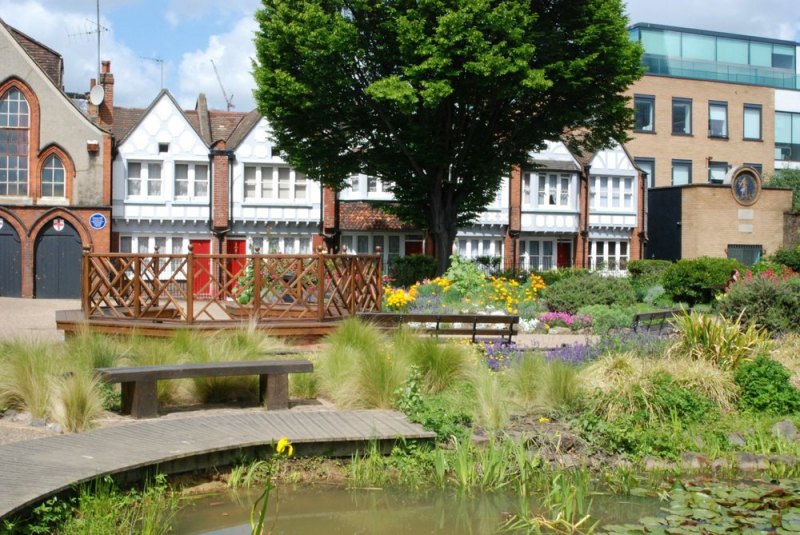
https://www.bost.org.uk/ 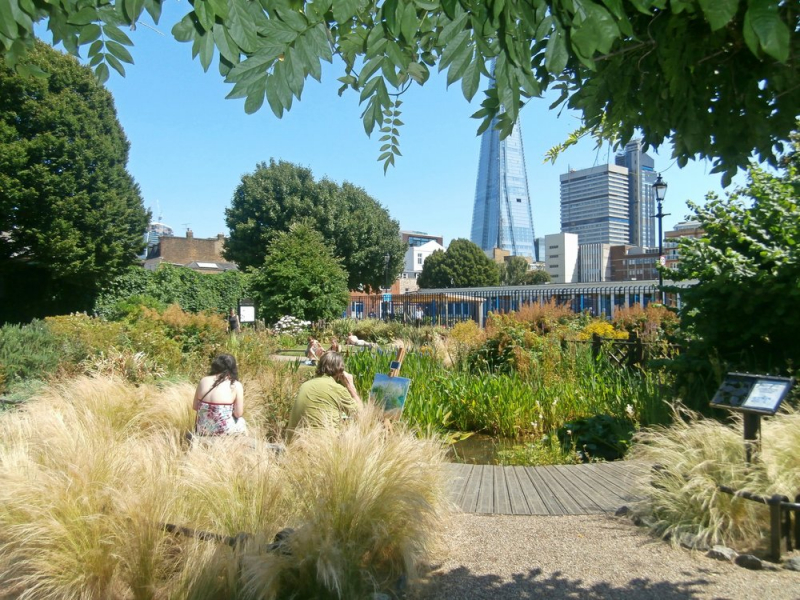
https://www.bost.org.uk/ -
Abney Park in Stoke Newington is a woodland memorial park and Local Nature Reserve that is run by the London Borough of Hackney. It is one of the "Magnificent Seven" garden cemetery in London. After making your way through the decaying gravestones and overgrown trees of Abney Park Cemetery, you will ultimately come to a central clearing that is dominated by the ominous shell of a long-gone chapel. The beautiful gothic revival structure was constructed in 1840, but it was destroyed by fire and shut down in the 1970s. Naturally, this only serves to heighten its attraction, and as you emerge from the trees and enter its shade, you half-expect to hear ominous organ notes and a clap of thunder. One of the hidden green spaces in London - Abney Park - well worth visiting and enjoying the beauty.
All year long, Abney park is open to the public for free, allowing anybody to visit and take advantage of this tranquil haven of nature and history. Take a guided tour, learn how to chisel a stone or carve a spoon, find out why dead trees are cities for wildlife, attend one of the special events to feel the charm of Abney, or get involved by volunteering. In London's N16 neighborhood, the park is close to Stoke Newington High Street. Its 12.53 hectares (31.0 acres) are made up of a nature reserve, a classroom, a visitor center, and an abandoned central chapel. On weekdays and weekends, the park is typically open for free public use from roughly 9.30 am until 5 pm.
Address: 215 Stoke Newington High St, London N16 0LH, United Kingdom
Phone: +44 20 7275 7557
Opening hours: 8AM - 8:30PM
Rating: 4.8/5.0, 160 Google reviews
Website: https://abneypark.org/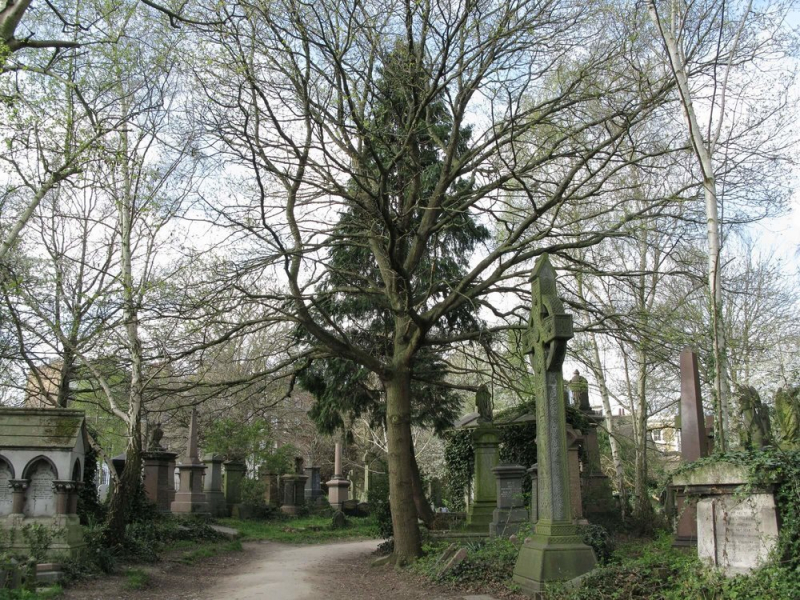
https://abneypark.org/ 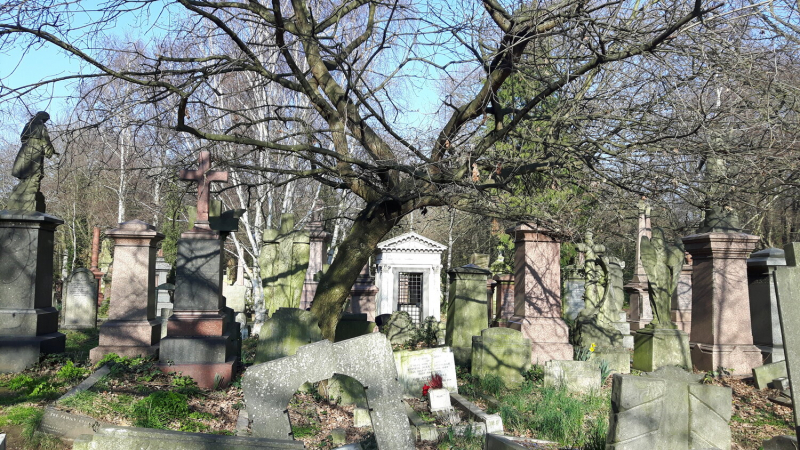
https://abneypark.org/ -
One of Hampstead Heath's secret gems is the Pergola. It was the vision of Thomas Mawson, a renowned landscape architect, and William H. Lever, afterwards Lord Leverhulme, a wealthy idealist and benefactor of the arts, architecture, and landscape gardening. It looks out over West Heath.
This formal Arts and Crafts garden, a favorite of nearby artists, was built between 1910 and 1925 for soap tycoon Lord Leverhulme and renovated in the 1990s. It is a little-known area of Hampstead Heath. The raised, covered pergola, which is as tall as Canary Wharf, is draped in wisteria in late spring, but spectacular views of London can be experienced year-round. If you go in the early evening, you might witness long-eared bats sleeping.
Every year, thousands of people meander across the vast and undulating parkland of Hampstead Heath, but very few find this mysterious and elegant corner of fading grandeur on the West Heath. The spectacular gardens and dramatic elevated walkway, where overhanging plants create a lush canopy and tangled roots wrap around smooth stone columns, were built by Lord Leverhulme at the beginning of the 20th century as the location for his opulent banquets. A tiny insight into the opulent life of the Edwardian era.
Address: The Pergola, Inverforth Cl, London NW3 7EX, United Kingdom
Phone: +44 20 7332 3322
Opening hours: 8:30AM - 8PM
Rating: 4.8/5.0, 1,566 Google reviews
Website: https://www.cityoflondon.gov.uk/
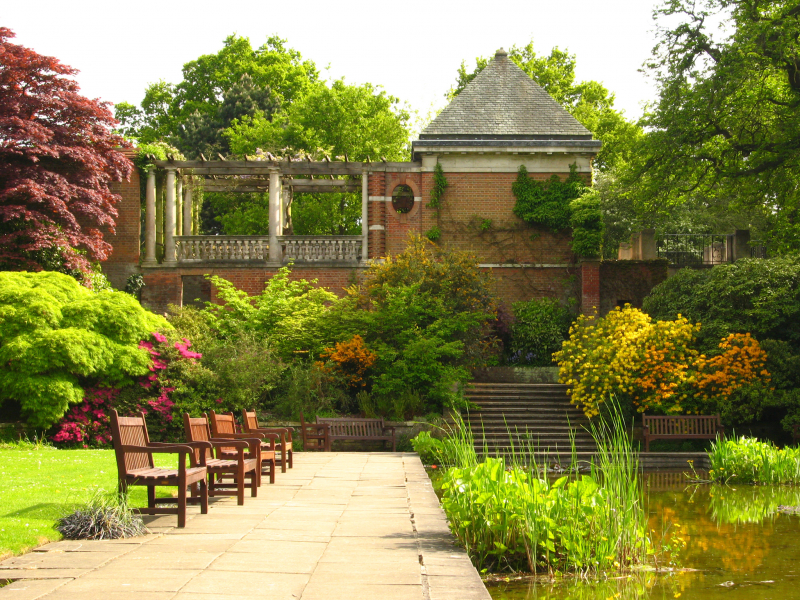
https://www.timeout.com/ 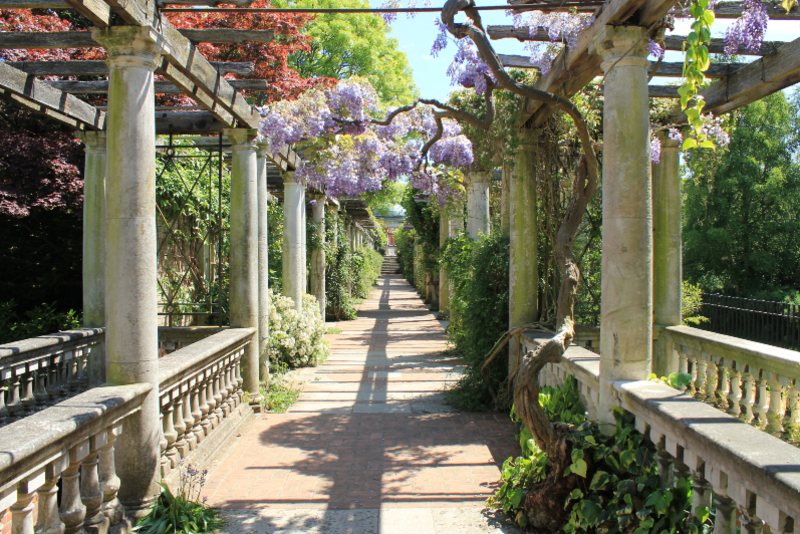
https://www.camden.gov.uk/ -
In the London Borough of Haringey, Queen's Wood is a 52-acre (21-hectare) section of historic woodland that borders Highgate Wood and is situated between East Finchley, Highgate, Muswell Hill, and Crouch End. It was formerly a part of the old Forest of Middlesex, which was documented in the Domesday Book and spanned a large portion of London, Hertfordshire, and Essex. The London Borough of Haringey now has three local nature reserves. Highgate tube station is a short distance away from it.
This is one of the Hidden Green Spaces in London. Given its proximity to central London, the ground flora is quite diverse. It has a sizable population of wood anemone, square-stemmed St. John's wort, yellow pimpernel, and wood sorrel. In addition to about 23 types of trees and shrubs, a survey carried out in 1984 identified 39 distinct herbaceous species and 15 different grasses as native to the wood. The bird population is diverse and includes nesting pairs of at least 27 species, including the endangered song thrush and two species of woodpecker, despite quite high levels of disturbance. Queen's Wood has a hundred different kinds of spiders to be found, and a nationally uncommon gem beetle is common.
A small, abandoned paddling pool has been transformed into a pond with native aquatic vegetation. The Friends of Queens Wood society provided help in order to do this. The Moselle, a stream that flows through sections of North London on its way (now via Pymmes Brook) to the River Lea in Tottenham, originates in the park as well.
Address: Queenswood Rd, London N6 6UU, United Kingdom
Open: 1898
Opening hours: Open 24
Rating: 4.7/5.0, 388 Google reviews
Website: https://www.haringey.gov.uk/
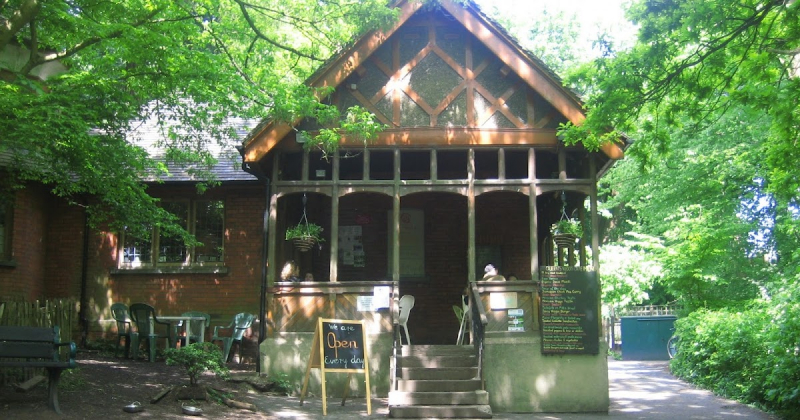
http://www.londonpopups.com/ 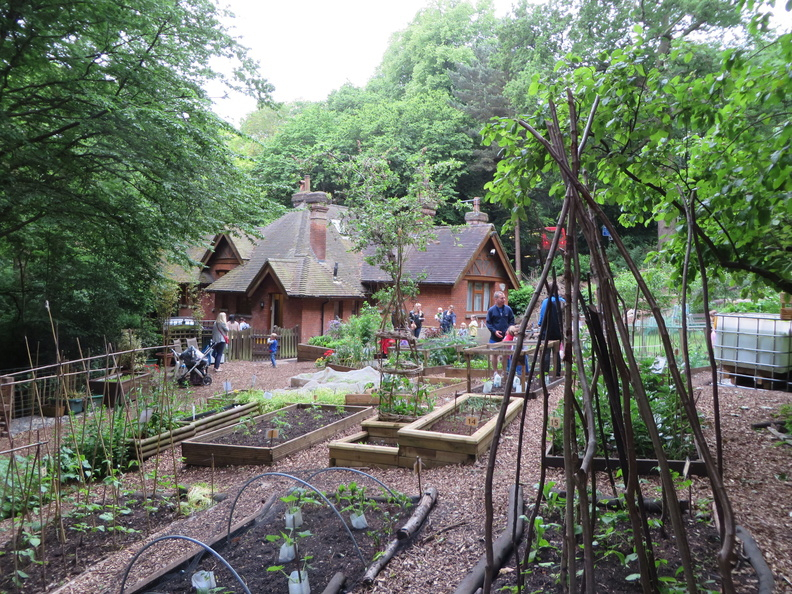
https://londongardenstrust.org/ -
A modest garden with lofty goals can be found between the generous Hampstead Heath and the busy Royal Free Hospital. The World Peace Garden, which is a serene forest glade with three ponds and a wishing well, genuinely lives up to its name.
The sentiments and aspirations of the people who lived and worked in the region, which had been a wasteland for more than a century next to Hampstead Railway Station, are preserved in glass and ceramic tiles that run across a wall. In addition, tea parties, puppet shows, jazz nights, and regular chess competitions are held in World Peace garden. This wasteland near to Hampstead Heath station was turned into an award-winning wooded glade by volunteers. This public area, which Condé Nast Traveler suggests, has three tiny ponds with interesting flora, winding walks, casual seating for performances on the stage at the bottom, and room to think in solitude.
The ponds and soft landscaping were planned by Tony Panayiotou, and the hard landscaping was made by Michael Wardle. Visitors are greeted by Peace Tiles made and given by Melissa Fairbanks by the Friends of Peace Garden. The Peace Garden received the Hampstead category of the Time Out Love London Award for Local Culture (2016).Address: 6 S Hill Park, London NW3 2SB, United Kingdom
Rating: 4.6/5.0, 25 Google reviews
Website: http://worldpeacegardencamden.org/
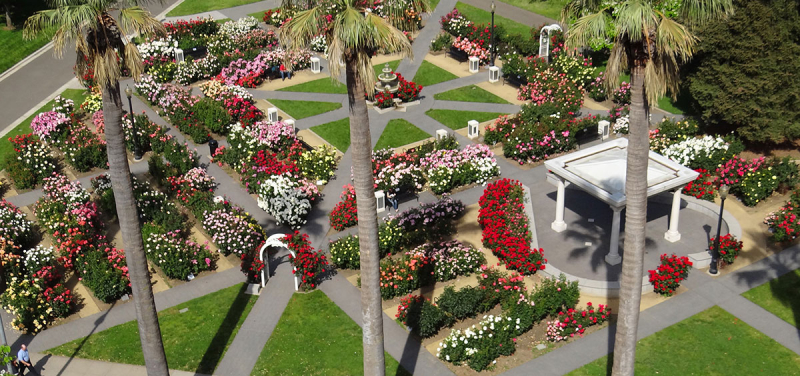
http://worldpeacegardencamden.org/ 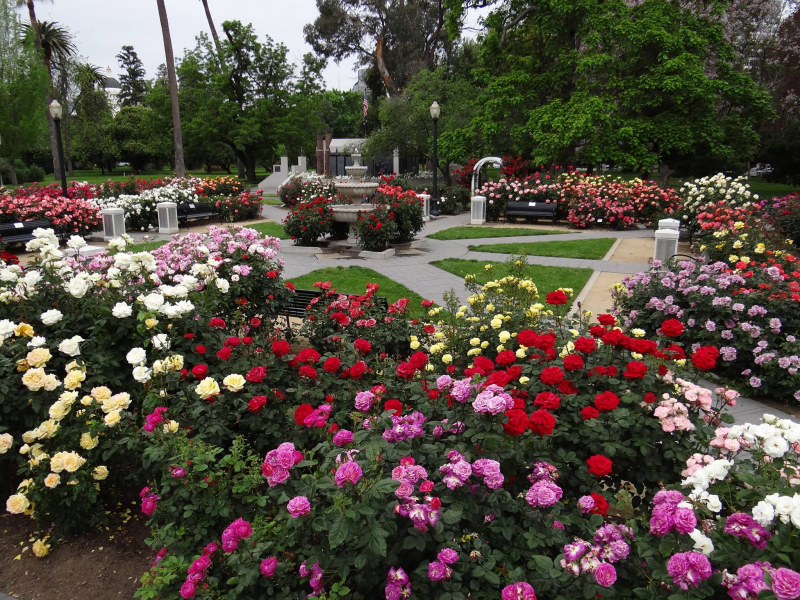
https://www.facebook.com/ -
Just south of Brixton, Brockwell Park is a much-needed patch of green space. In the summer, locals from the neighborhood come here to worship the sun, fly kites, swim in the outdoor pool, play football, and parade an amazing assortment of canines. It has a wide variety of settings to suit all interests, from the serene, rolling meadows of Tulse Hill to the sloping football fields along the Dulwich Road. It is large, diversified, and exciting. As you stroll through stone pathways, between beds of colorful plants and flowers, to find bubbling fountains and private benches, the urban clamor fades away. This corner of London, which was originally Brockwell Hall's kitchen garden, is now a tranquil haven at a place where it is most needed.
In 1891, Brockwell Park Walled Garden was made accessible to the general public by the London County Council. Prior to then, it was part of the grounds of Brockwell Hall, whose existing structure dates from 1811 and is classified as a Grade II building. The hall is still present at the park's center and is now a slightly run-down place to buy tea, pastries, and fantastic ice cream.
The renowned lido was constructed in 1937 and, following a challenging ten years, was brought back to its former splendor in 2007. With its aerial slide, large sandpit, and areas for different age groups, Brockwell Park's playground is a favorite; close by are the duck ponds and the enormous paddle pool. Circuses, outdoor concerts and festivals, as well as the yearly Lambeth Country Show—a spectacular mashup of a village fete, a city farm, a reggae band, and an exhibition of vegetable sculptures—are regular events. Crowds gather from all over the city for this event.
Address: Brockwell Park Gardens, London SE24 9BN, United Kingdom
Rating: 4.7/5.0, 47 Google reviews
Website: https://www.friendsofbrockwellpark.org/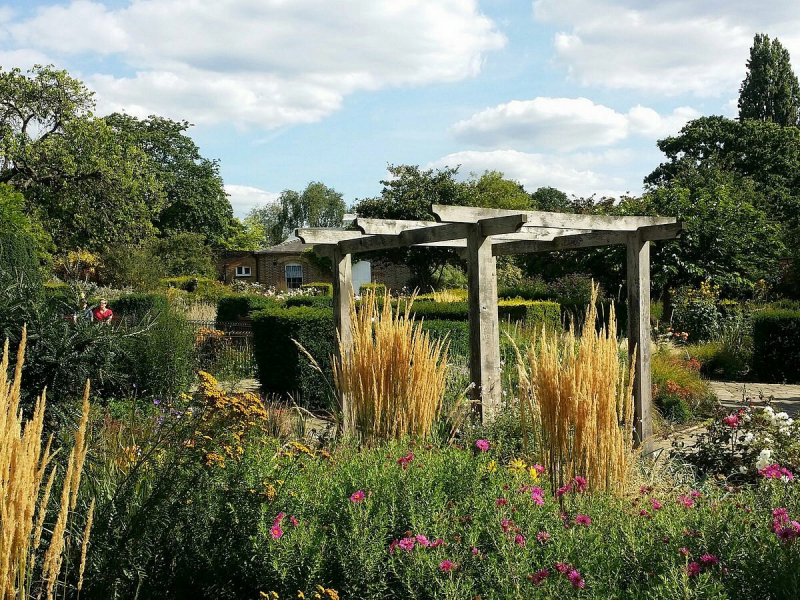
https://www.tripadvisor.com/ 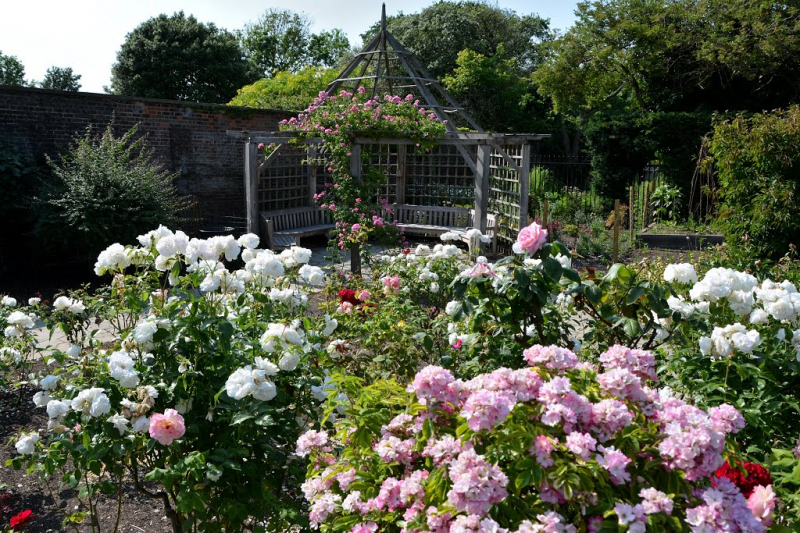
https://mapio.net/ -
Crystal Palace Park Maze is one of the Hidden Green Spaces In London. The former Crystal Palace Exhibition building is surrounded by Crystal Palace Park, a Victorian recreation area in the South London neighborhood of Crystal Palace. After the 1851 Great Exhibition, the Palace was moved from London's Hyde Park and rebuilt with some additions and modifications to serve as the centerpiece of the pleasure ground. It was destroyed by fire in 1936. The park has a music bowl, a maze, lakes, and full-scale reconstructions of dinosaurs in a landscape.
One of the highest elevations of the Norwood Ridge is where the park is located. Views from this elevation extend north to central London, east to Greenwich and the Queen Elizabeth II Bridge, and south to Croydon and the North Downs. Crystal Palace Park Maze is still a significant public space in London; it was once managed by the GLC until being transferred to the London Borough of Bromley when the GLC was abolished in 1986. One of London's largest weekly outdoor farmers' markets is held in the park. The park has recently served as a venue for organized music festivals like Wireless Festival and South Facing Festival.
Nearly as old as the dinosaurs—the dinosaur statues in the Crystal Palace—is this network of puzzling hedgerows. The puzzle, which dates from circa 1870, is hidden close to the park's northern lake. It was rebuilt in 2009 to mark the Girl Guides' centennial after falling into ruin. At a Scouts assembly in the park, some young women implored Lord Baden-Powell to "do something for the girls," which led to the founding of the organization.
Address: Thicket Rd, London SE19 2GA, United Kingdom
Phone: +44 300 303 8658
Opening hours: 7:30AM - 8:30PM
Rating: 4.5/5.0, 10,792 Google reviews
Website: https://www.crystalpalaceparktrust.org/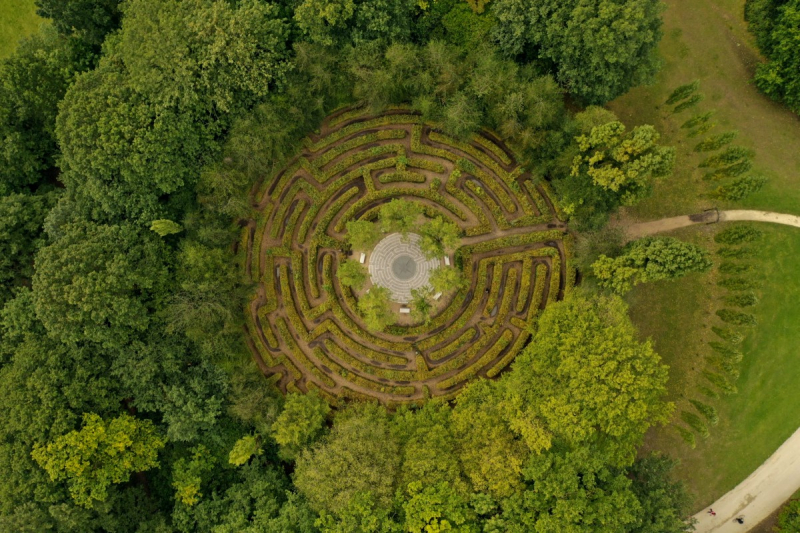
https://londonblog.tfl.gov.uk/ 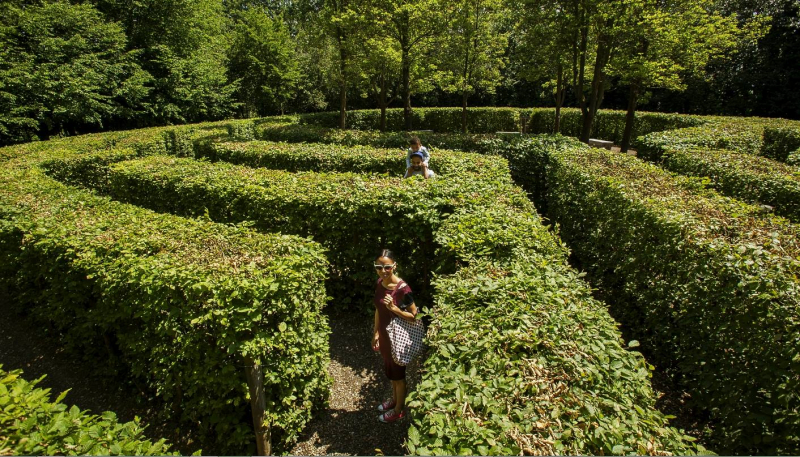
https://www.facebook.com/ -
South London's Vauxhall is home to the Green Flag Award-winning Vauxhall Park, which is managed by Lambeth Council. Following a public campaign led by the suffragist Millicent Fawcett, the social reformer Octavia Hill, and members of the Kyrle Society, it was built on an 8.5-acre plot costing around £45,000 today. You will feel at home here if you can't help but squeeze a lavender stalk when you pass a front garden. In Vauxhall Park, you may find this tiny square field of purple blossoms and fragrant green foliage between the rose pergola and the model village. The Prince of Wales officially inaugurated the brand-new park in 1890.
Vauxhall Park Lavender Garden contains one of Edgar Wilson's model villages (others are located in Brockwell Park and Fitzroy Gardens in Melbourne). In 2001, the then-MP Kate Hoey renovated the model village and reopened it. The park is well-known for its annual lavender harvest and lavender garden, which is situated on the site of a former bowling green. In 2020, Lambeth Council began a significant park restoration.A children's playground, a One O'Clock Club, a nursery, a multi-use games area, two tennis courts, chess tables, a park café, and two fenced dog areas are among the park's amenities. Founded in 1999, the Friends of Vauxhall Park organization is still operating.
Address: Vauxhall Park, Lawn Ln, London SW8 1JY, United Kingdom
Phone: +44 20 7926 9000
Opening hours: 8:30PM - 6PM
Rating: 4.4/5.0, 1,007 Google reviews
Website: http://www.vauxhallpark.org.uk/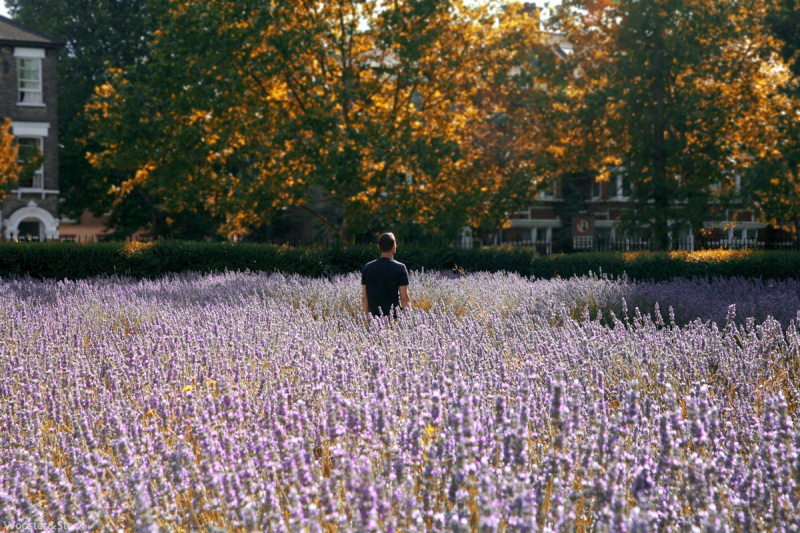
https://www.pinterest.com/ 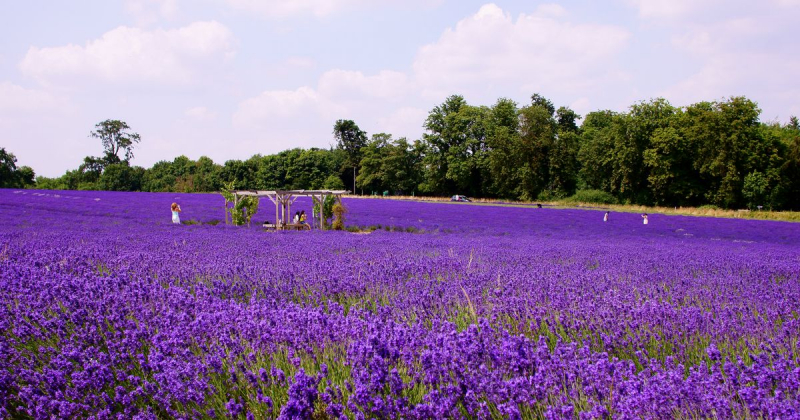
https://www.mylondon.news/ -
In the City of London, on St. Dunstan's Hill, midway between London Bridge and the Tower of London, stood the Church of England parish church known as St. Dunstan-in-the-East. The Second World War partially damaged the church, and today the remnants form a public garden. The parish is currently part of the Benefice of All Hallows by the Tower, and the church occasionally hosts outdoor services, including on Palm Sunday before a procession up St. Dunstan's Hill and along Great Tower Street to All Hallows by the Tower. On January 4, 1950, the ruin was classified a Grade I listed building.
St Dunstan-in-the-East has strong stone walls that have practically been drowned by nature, and it provides a curiously quiet atmosphere amidst the clamor of the City. The lovely ruins of this medieval church were bombed out during the war and have since been taken over by nature, providing an exquisite place in the middle of the city. The stone arches, which are listed in Grade 1, are currently covered with leaves and vines. It provides a little respite from the suits rushing about outside. Ideal for dreamy thinking and evocative photos of folk/prog rock bands.
Address: St Dunstan's Hill, London EC3R 5DD, United Kingdom
Phone: +44 20 7374 4127
Opened: 1698
Opening hours: 8AM - 7PM
Rating: 4.7/5.0, 4,283 Google reviews
Website: https://www.cityoflondon.gov.uk/things-to-do/city-gardens/find-a-garden/st-dunstan-in-the-east-church-garden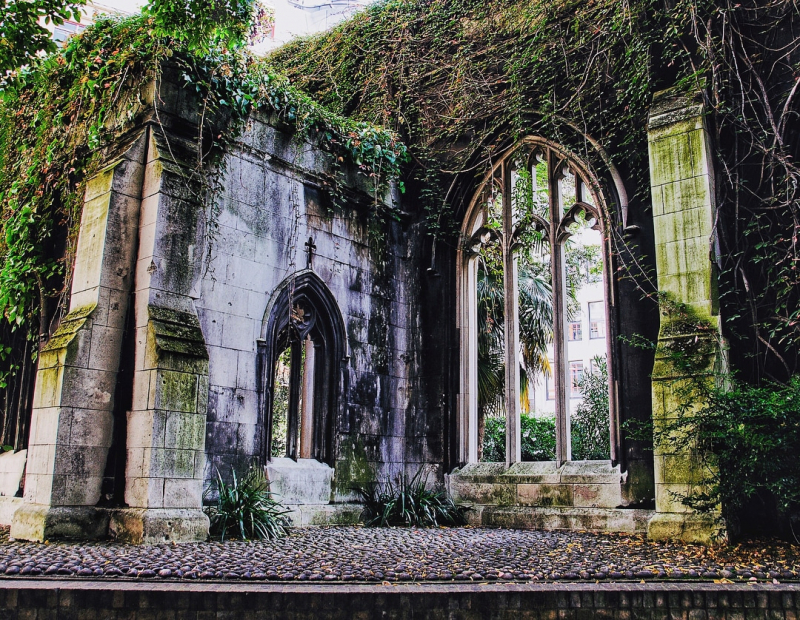
https://secretldn.com/ 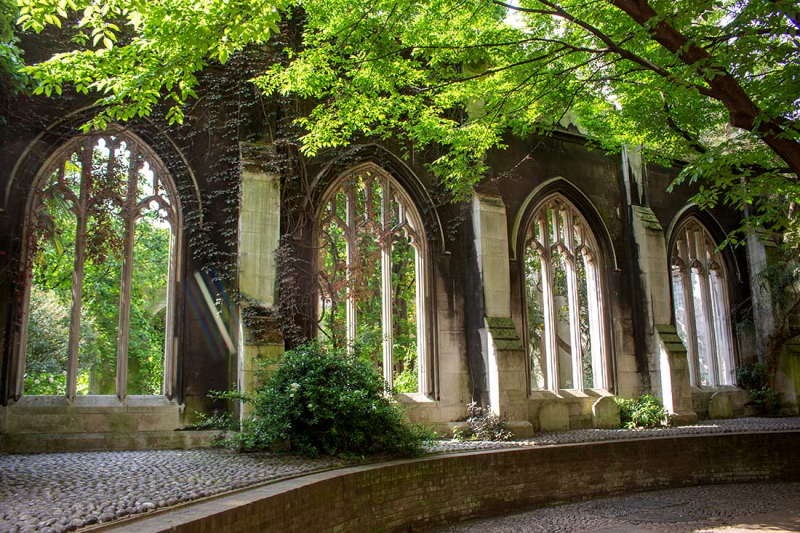
https://www.cktravels.com/ -
Holland Park is home to one of London's most stunning gardens. The Kyoto Garden provides a special Japanese-style setting that is ideal for contemplation and relaxation. West London's 22-hectare Holland Park is built around the remains of Holland House. The property, which was formerly known as Cope Castle, was once a magnificent mansion that throughout its history housed diplomats and wealthy families. It was constructed in 1605 but was destroyed in 1940's Blitz.
Kyoto Garden encircles Holland House, a Jacobean palace named for its second owner, the Earl of Holland, whose wife was the first person in England to produce dahlias successfully. Disraeli and Lord Byron, among others, visited Holland House in the 19th century, when it was a center of political and intellectual activity. However, during World War II, bombs largely damaged Holland House. These days, dahlias are still planted in Holland Park's 55 acres, which also have the Japanese-style Kyoto Gardens with koi carp and a bridge at the base of a waterfall.
The playground, which features a tyre swing, a large see-saw, a zip line, and a lot of climbing equipment, is a must-see for families. A second fenced-in play area is also available for younger children. Opera and open-air theater are presented in the park during the summer. It's the ideal place to chill with a book, reflect, or engage in samurai dueling to the death.Address: Holland Park, Holland Park Ave, London W11 4UA, United Kingdom
Phone: 020 7361 3000
Opening hours: 7:30AM - 8PM
Rating: 4.7/5.0, 8,398 Google reviews
Website: https://www.rbkc.gov.uk/
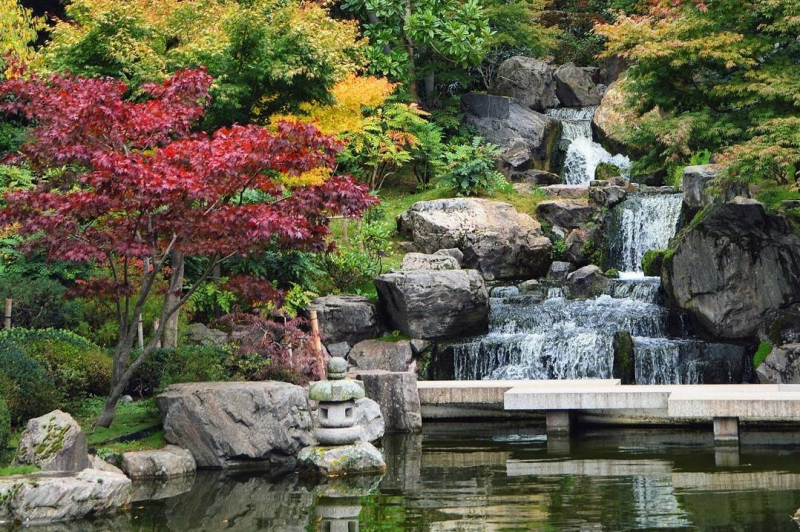
https://secretldn.com/ 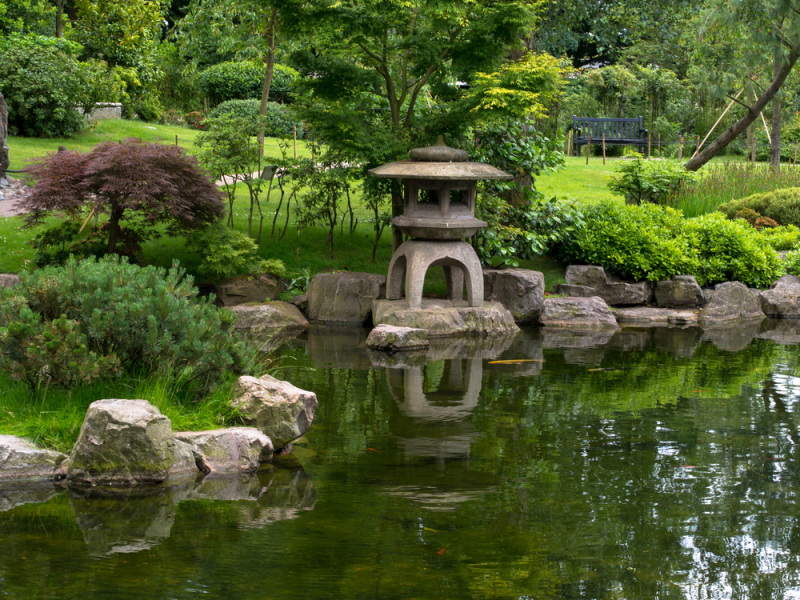
https://www.parkgrandkensington.co.uk/














